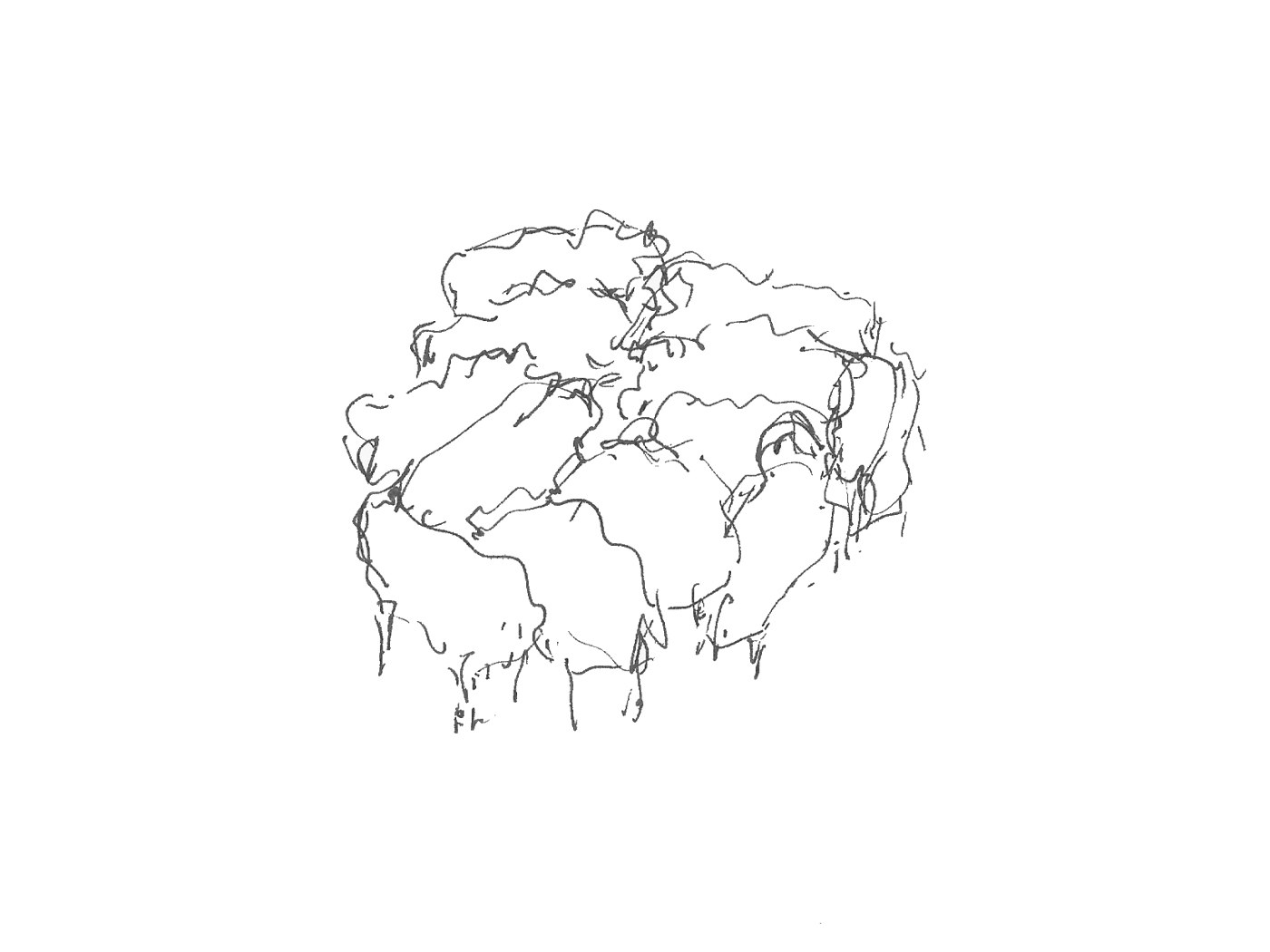Competition entry
Helsinki is a city surrounded by water, and the site for the new Guggenheim Helsinki is on the waterfront, below a park and looking out to islands in the bay.
Acres of concrete around the port have cut the city off from the water. Our proposal aims to re-connect the city with the sea, and so also with its myths and beginnings.
The building is a place of congregation, conceived as a herd of sheep delivered to the port and walking up to higher land.
Half the site is given over to a public park, across which the building is approached, setting it apart from the city grid. The park is paved in undulations of granite cobbles, which continue into the ground floor foyer and cafés of the building, and form a large ramp leading to the galleries above.
These are floored in end-grain timber blocks, with walls of soft-textured lime render on which a patina of marks from successive exhibitions is allowed to build up, under rooflights allowing natural light but protecting from direct sun. Everything touched by the hand is in Finnish pine.
Externally the galleries are clad in natural zinc, catching and reflecting the low light, and cantilevered out towards the water and over the port access road at the rear. They provide the varied form of this quiet building, bold enough not to shout nor to try to compete with the cruise liners berthed alongside, but nestled instead amongst trees with the quiet presence of the island churches out in the bay.
The landscape was developed with Kim Wilkie, and the structure and environmental strategy with Expedition.










